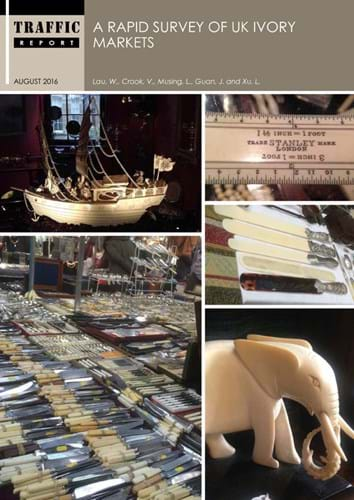
The authors of the report A Rapid Survey of UK Ivory Markets published on August 31 concluded that: “Links [between the antiques trade and] the current elephant poaching crisis appear tenuous at best”. Of more than 3000 objects sampled, no new or unworked ivory was found and only one item (from the 1960s) was after the 1947 cut-off date for antique ivory.
The last similar survey conducted in 2004 (E Martin and D Stiles, The Ivory Markets of Europe, published by Save the Elephants in 2005) had concluded that “more than 95% of the ivory items for sale in London are antiques” although then 2% of the items sampled were thought to have been recently made.
As far as possible, the survey followed the venues and the methodology of the Martin and Stiles report of 2004.
Victoria Borwick MP will tell delegates at the Art Business Conference today that the antiques industry had been vindicated by the Traffic report.
Undercover Research
In April, undercover researchers – a mix of Chinese, American and European nationals with expertise in the identification of ivory – visited 13 London antiques markets plus Kensington Church Street and Mayfair.
Research was also carried out via two online auction consolidation websites and six online antique dealer marketplaces recording 1700 ivory items on sale – all of them worked antiques.
In April, the researchers found fewer dealers and auctioneers offering ivory (declining from around 640 in 2004 to 200 in 2016), while the total number of ivory items for sale also declined, from around 6000 items to 3200. The emergence of online sales and stricter legislation that has caused prices to fall were both cited by traders as reasons for this apparent physical market decline.
The nationality of buyers appeared to have changed too: in 2004 they were mainly American and European tourists, while in 2016 traders reported that travellers and citizens from East Asian countries and territories, including mainland China, Japan and Hong Kong were predominant.
Of more cause for concern, the researchers found mixed understanding amongst traders of what constitutes legal ivory. All traders were aware of there being a specific cut-off date for antiques (although not all could recall the date) and many of the stricter rules regarding ivory importation into, for example the USA and China, but some were far less knowledgeable.




